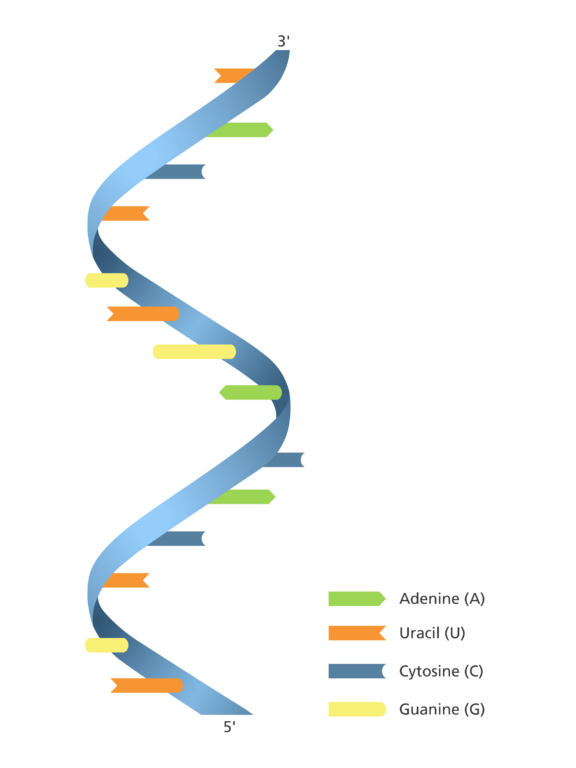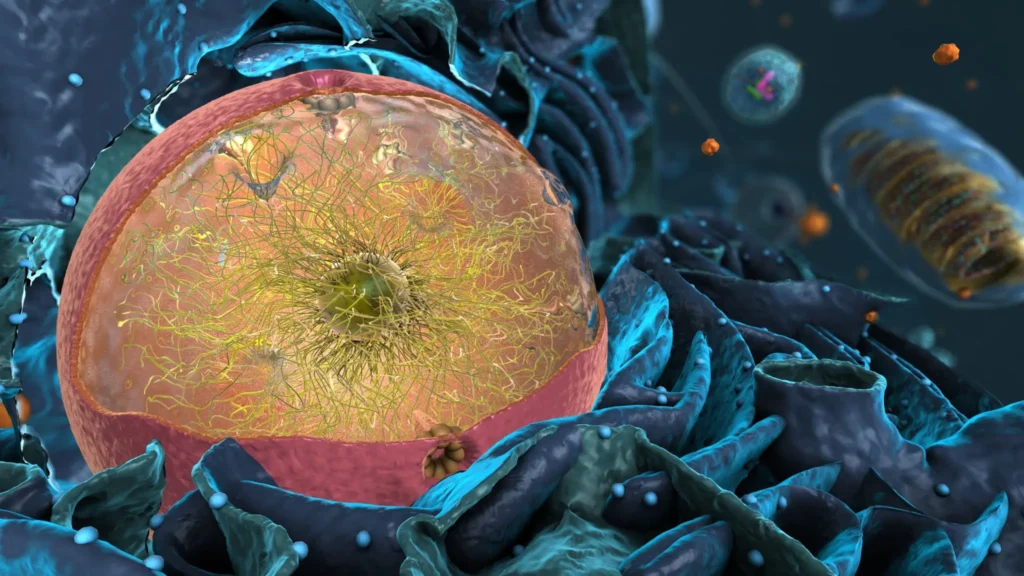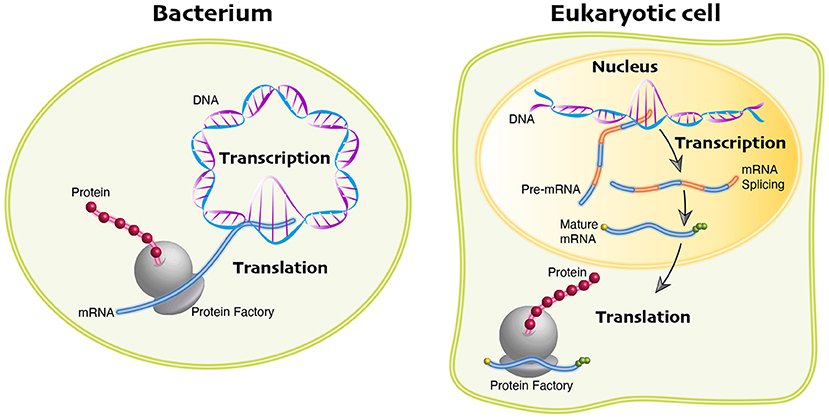What is RNA?

RNA is a single-stranded molecule made up of nucleotides, which are composed of a sugar (ribose), a phosphate group, and a nitrogenous base.
Table of Contents
Eukaryotes

Eukaryotes are organisms whose cells have a nucleus, a membrane-bound organelle that contains the cell’s genetic material (DNA). They are a diverse and abundant group that includes:
Animals: From microscopic worms to giant whales, all animals are eukaryotes.
Plants: From tiny mosses to towering trees, all plants are eukaryotes.
Fungi: Mushrooms, yeasts, and molds are all examples of fungi, which are eukaryotes.
Protists: A diverse group of single-celled organisms like amoebas, algae, and paramecia.
It all starts with the DNA: Imagine DNA as the blueprint for building a house. The blueprint contains all the instructions, but it needs to be interpreted and turned into a usable form to build the house. That’s where RNA processing comes in.
Transcription: From DNA to RNA: The blueprint (DNA) is first copied into a messenger RNA (mRNA) molecule. This process, called transcription, creates a pre-mRNA molecule. This pre-mRNA molecule is like a rough draft of the instructions, containing both useful and useless information.
RNA Processing: Refining the Rough Draft
To create a usable set of instructions (mature mRNA), the pre-mRNA needs some serious editing
5′ capping
A protective cap is added to the beginning of the mRNA, like a safety pin on the blueprint. This cap helps the mRNA find its way to the ribosomes, where protein synthesis occurs.
3′ polyadenylation
A tail of adenine nucleotides is added to the end of the mRNA, like a bookmark in the blueprint. This tail helps the mRNA survive longer in the cytoplasm and prevents degradation.
Splicing

The pre-mRNA contains non-coding regions called introns, like unnecessary details in the blueprint. These introns are removed, and the remaining coding regions (exons) are joined together. This process, called splicing, ensures only the essential information is used to build the protein.
The Final Product: Mature mRNA
The processed mRNA is now a mature blueprint, ready to be used to build a protein (the house). This mature mRNA leaves the nucleus and travels to the cytoplasm, where it interacts with ribosomes to direct protein synthesis.
Why is RNA processing so important?
Protection and Stability: Capping and polyadenylation help the mRNA survive in the harsh environment of the cytoplasm and prevent degradation.
Efficiency: Splicing removes unnecessary information, streamlining the process of protein synthesis and ensuring the production of functional proteins.
Regulation: Different versions of a protein can be produced from the same gene by alternative splicing, allowing for greater flexibility and control over gene expression.
In summary, RNA processing is a critical step in gene expression, transforming a pre-mRNA molecule into a mature mRNA that can be translated into a functional protein. It’s like turning a rough draft blueprint into a detailed and accurate construction plan.
Frequently Asked Questions(FAQ)
What is eukaryotes?
Eukaryotes are organisms whose cells have a nucleus, a membrane-bound organelle that contains the cell’s genetic material (DNA).
What is RNA ?
RNA is a single-stranded molecule made up of nucleotides, which are composed of a sugar (ribose), a phosphate group, and a nitrogenous base.
What do you mean by Splicing?
The pre-mRNA contains non-coding regions called introns, like unnecessary details in the blueprint. These introns are removed, and the remaining coding regions (exons) are joined together. This process, called splicing, ensures only the essential information is used to build the protein.
Related Articles

